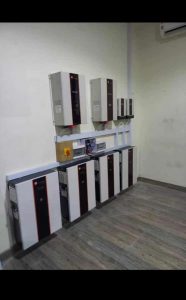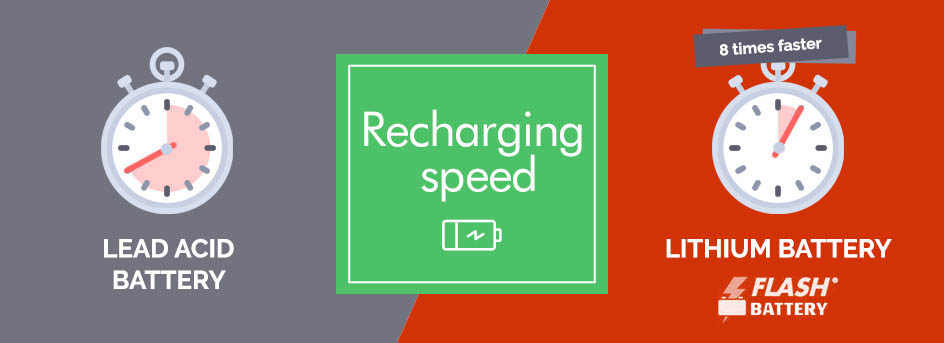Safety, waterproofing and emissions
Lead acid batteries have no safety devices, are not sealed, and release hydrogen during charging. In fact, their use in the food industry is not permitted (except for “gel” versions, which are even less efficient).
Lithium batteries release no emissions, are suitable for all applications (also available in IP67) and feature 3 different control systems that protect the battery:
1. Automatic disconnection, which disconnects the battery when the machine/vehicle is idle and protects the battery from improper use by the customer
2. Balancing and management system which maximizes battery efficiency
3. Remote control system with automatic warning of troubles and malfunctions
This is just one of the many questions that our customers ask during our consulting service. Having the answer ready means saving valuable time that can be used for designing and producing batteries.

Why change from a lead-acid battery to a lithium battery?
This question is certainly the most frequently asked and is the first of a long list. I could write an entire book on the answer, but wouldn’t have enough space or know how much time you’d have to read it, so I suggest we just examine the solution straight away.

Charging the battery
Lead Acid battery: The charging efficiency of this type of battery is low – only 75%! A lead-acid battery needs more energy for recharging than it delivers. The excess energy is used for gasification and for mixing the acid internally. This process warms up the battery and evaporates the water inside, which results in the need to top up the battery with distilled (demineralised) water.
Lead-acid recharging has severe limitations and a number of critical points. Here are the most important ones:
- Fast or partial charges ruin a lead-acid battery
- Charging times are long: from 6 to 8 hours
- The charger does not collect full information on the battery. It only checks the voltage, and that’s not enough. Changes in temperature affect the recharge profile, so if the temperature is not measured, the battery will never charge completely in winter and will gasify too much in summer
An incorrect charger or setting reduces battery life - Poor maintenance will also reduce battery life
Lithium ion battery: Lithium-ion batteries can be “fast” charged to 100% of capacity.
A lithium battery saves on your electric bill, as it is up to 96% efficient and accepts both partial and rapid charging.
A lithium battery can be charged to 50% capacity in only 25 minutes.
This innovative characteristic enables our customers to equip their devices with lower installed battery capacity than the capacity required with lead-acid batteries, because lithium batteries can be recharged repeatedly over a short time
Electronic systems inside the battery control the charger effectively, so it can deliver the exact current that is consistent with internal parameters (voltage, temperature, charge level, etc …). If a customer connects an unsuitable battery charger, the battery will not activate and is thus fully protected.
Charging
A lithium battery saves on electricity bill with efficiency up to 96%.
A lithium battery accepts partial charge and fast charge.
In 25 minutes we can charge 50% of the battery.
Lithium Battery
Lithium-Ion batteries are fairly maintenance free and doesn’t produce gas.
This eliminates any additional costs.
It works just fine.
Weight of battery
Lead Acid battery: 30Kg for kWh
Lithium ion battery: 6Kg for kWh
On average Lithium-Ion batteries weight 5 times less than standard lead acid


1 comment
Translandwp
February 26, 2022